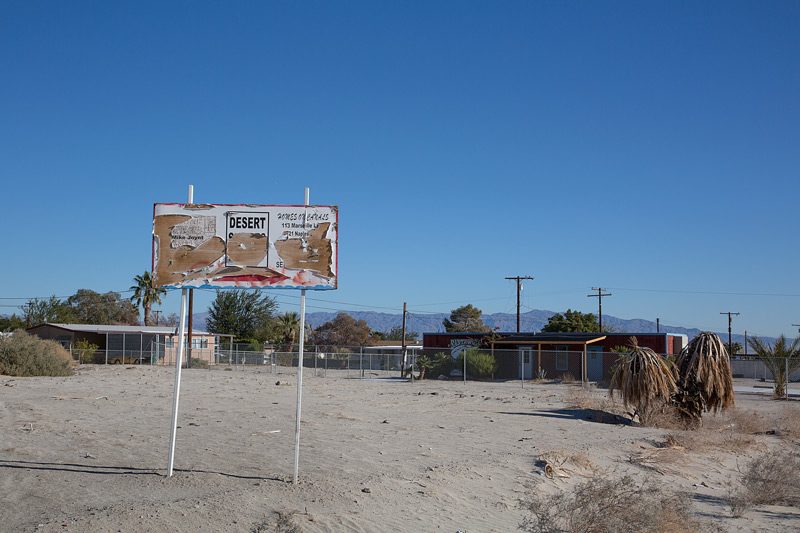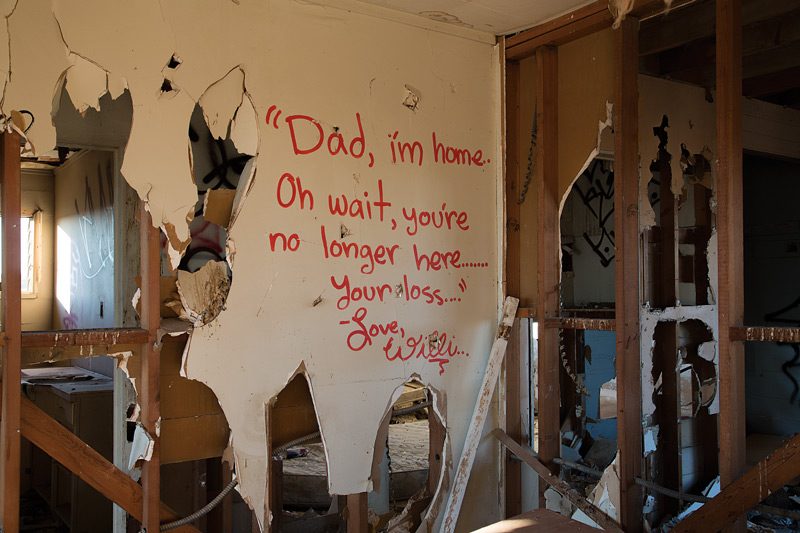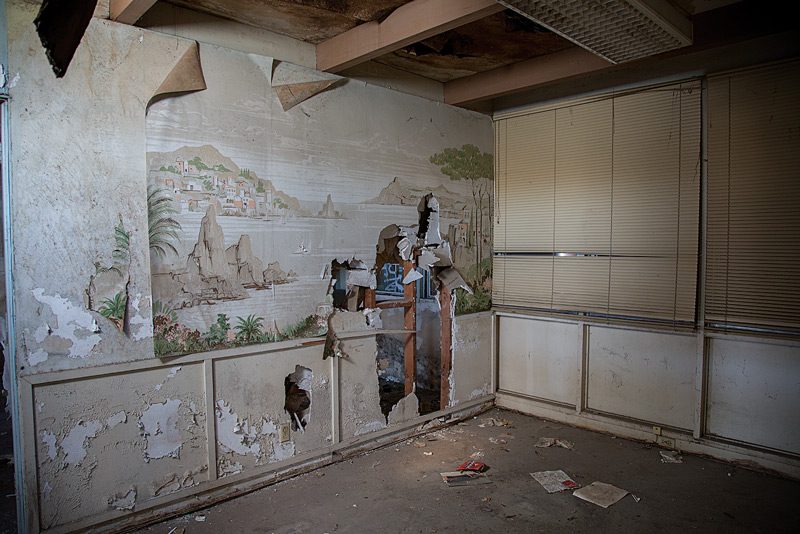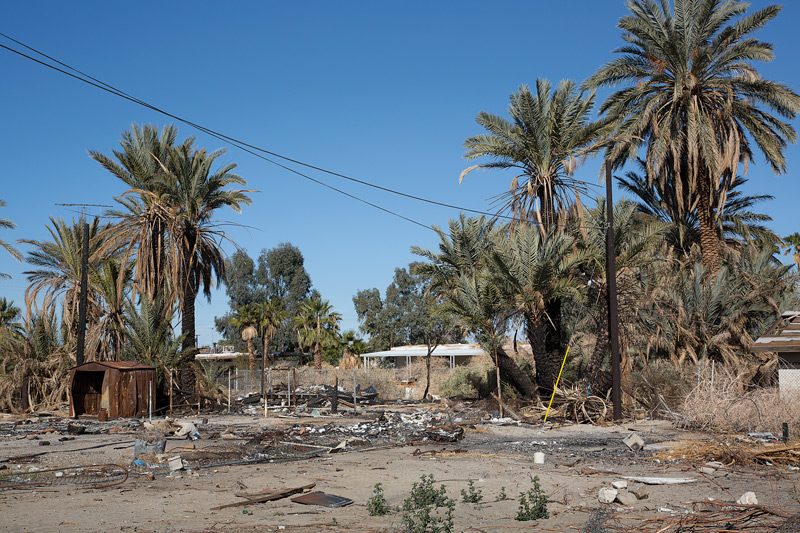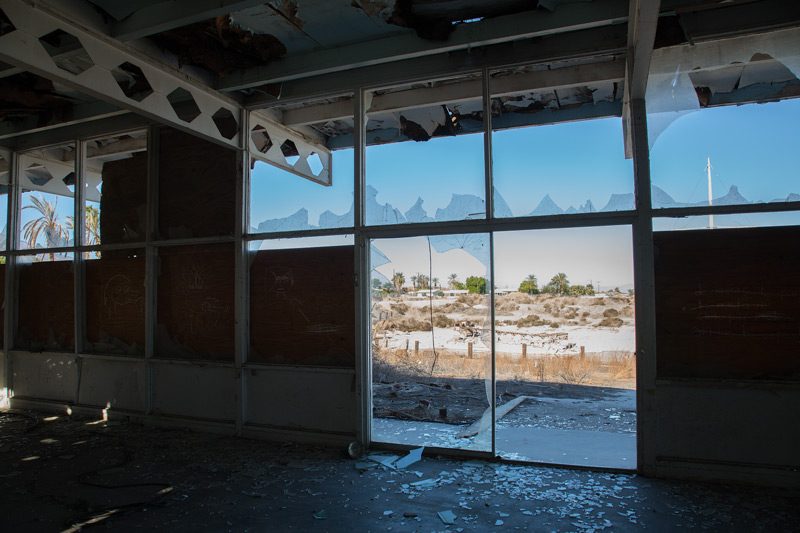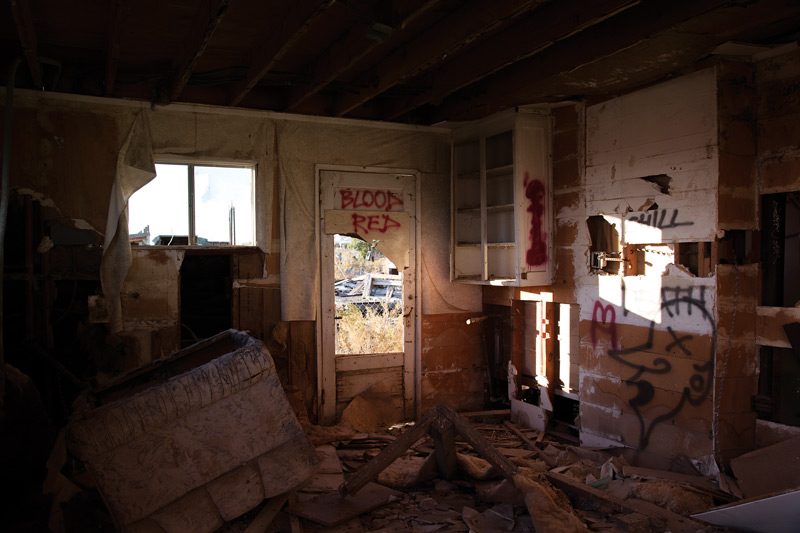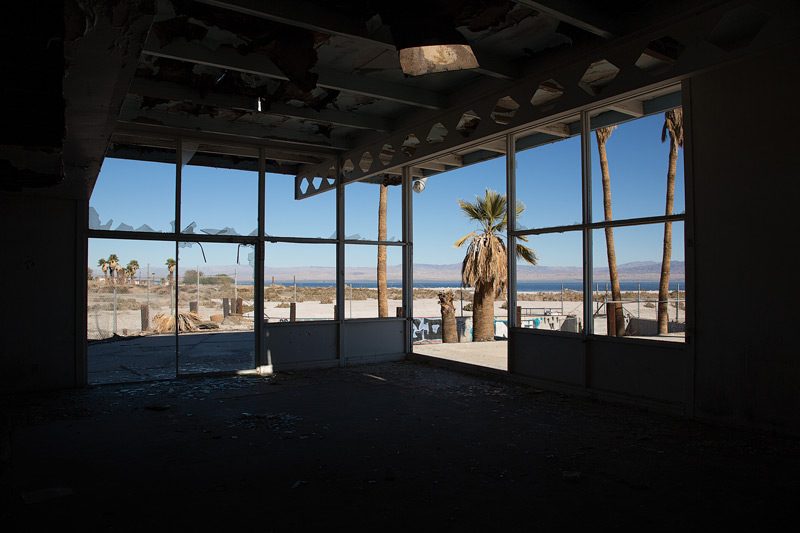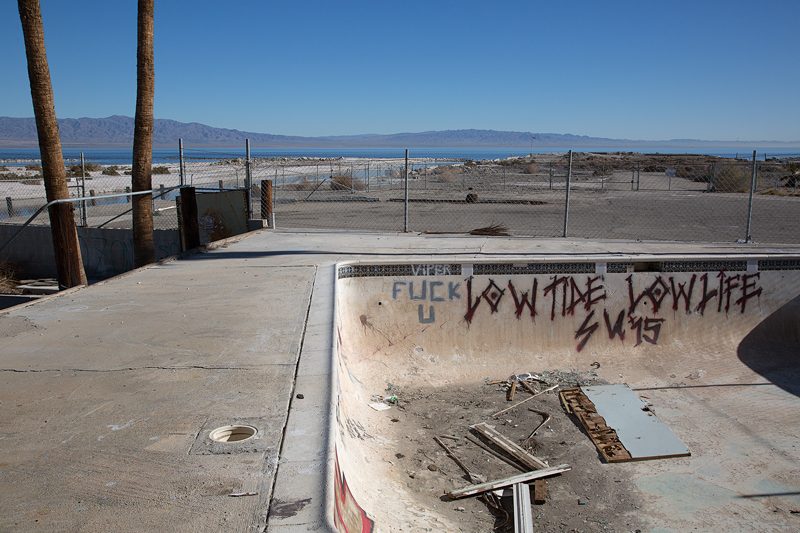Dead trees, a few dried-up pigeons, some rotting fish, and broken-up cottages: what is the world that these make up? From the perspective of Montreal documentary photographer Isabelle Hayeur, this is a landscape – that is, a space inhabited with suburbs and industrial plants. This wasteland is an image of our overflowing and contaminating consumer era. Land-scape is usually considered to be an artistic genre and a pictorial way of seeing the earth, of framing it as a view; however, the term frequently includes depictions of the human occupation and transformation of the earth, as well as a convention by which our viewing is constructed and in which nature and culture are intertwined. With her projects, Hayeur has undertaken to work in the liminal space where documentary and pictorial traditions overlap. She has carried out a number of such photographic projects in the past and presents her documentation in the idiom of dystopian urban landscape images. In addition to being a documentarian of the human impact on non-human environments, Hayeur is a journalist of the literature associated with this critique.1 Aside from this “activist” perspective, however, Hayeur is also a craftsperson of the picture frame, as she brings formal considerations of composition to her photographs that set them apart from a purely photo-journalistic practice. In this sense, she has oriented her production to a gallery-going audience rather than the audiences more attuned to print or online publications.
Hayeur adopts the title Desert Shores (Lost America), suggesting a topography, a territory, a landscape, and a history. Interestingly, in this particular project Hayeur is working with the image-making centre of the world, California, and the studios of Hollywood are just hours away from the site that she explores. In this series, she presents evidence of human intervention in a natural environment “gone wrong.” She accompanies her images with written statements in which she presents a case against industrial capitalism and its destructive impact on the natural environment. With this group of over seventy photographs, Hayeur describes and documents a site in southwestern California not far from the well-known Palm Springs. This site, the Salton Sea, is that of a catastrophe both natural and human. It is a large inland body of water that was formed by an accidental overflow in the Colorado River when the river exceeded the limits of an engineered canal system and poured into a below-sea-level hollow known as the Imperial Valley. The overflow formed the largest inland body of water in California. Apparently, before human interference, the lowland would fill with and empty of water on a cycle of four or five hundred years. In 1905, engineers attempting to secure an expanded and humanly regulated supply of water for California agriculture designed a system of canals and dikes. Following the increased water supply, expanding industrial farms have resulted in a constant increase in the salinity of the lake, which is now higher than that of the Pacific Ocean. In other words, the water has become contaminated, and it means death for the fish and destruction for the local communities based on tourism and recreation.
In the 1950s, the Salton Sea began to be exploited as a vacation site; towns and suburban-style centres developed and prospered even as the toxicity of the water and land increased under the impact of industry. This particular vacation site, Desert Shores, is now a much-photographed curiosity. Feature films have been shot there, their makers attracted by an apocalyptic vision recalling British author J. G. Ballard, whose novels bear titles such as The Drowned World, The Burning World, and Crystal World. Ballard even inspired his friend, the photo and film artist Tacita Dean, to visit the southwestern salt lakes in pursuit of Robert Smithson’s ghost.
In keeping with documentary work, Hayeur presents a topical subject and commits to revealing her subject in the light of reality, as it really is once we have seen through all the “papering over.” And in fact, many of her images of domestic interior spaces present exactly this visual model. We literally see through smashed walls, broken windows, shredded wallpaper, and shattered TV screens, with all the familiar separations of inside and outside disrupted. We see evidence of a narrative in which America, or portions of it, is taking on a third world appearance: abandoned buildings, burned-out trailer parks, peeling wallpaper, and graffiti messages to the past – “goodbye dad” – and a future – “lost hope.” The sharp edges of glass shards still hanging in window frames are reminders that this is a zone of uncertainty, or perhaps just a “zone.” What is always clear is the absence of inhabitants, and this marks the desolation invoked by abandoned and ruined homes. The feeling is one of the loss that we feel if we think about the impact that our way of life is having on other sentient beings, as their environments are consumed as raw material for industries producing only our own confusion. Hayeur hopes to persuade us to pursue this path of contemplation, intending her photographs and the accompanying explications as a reflection on the contemporary dominance of “man over nature.”
In adopting the title Lost America, Hayeur has taken up a practice that began in the early days of modernist photography – that is, art photography – typified by the images of artists such as Charles Sheeler, who in 1915 photographed the Bucks County Barn face-on, flat, close-up, detailed, and with the self-consciousness of artistry. Walker Evans photographed small-town arcades with a similar directness in the 1930s, bridging the gap between social engagement and the detachment of abstraction. This is demonstrated most effectively in his photographs featuring terse titles but foregrounding the verbal elements that marked his decaying vernacular architectural subjects. The desert theme was continued in the works of Arizona photographer Frederick Sommer, who, incidentally, was educated as a landscape architect. And more recently, with the arrival of the Internet we have websites and blogs stocked with beautiful landscape images, including many that take up the theme of “Lost America.”
Hayeur has seen and recorded the past, or nearly past, life of a suburban recreational community. Several aspects of this scene are immediately resonant: although this is an urban landscape, the images are unpopulated. Two types of written communications are obvious: the conventional signs that adorn urban environments, and the competing graffiti messages sprayed and drawn anywhere and everywhere. As has been the custom since the early days of art photography, these verbal bits function as quasi-captions and photographers often adopt them to form witty titles and embedded captions that help the images function as “visual poetry.” This may be a residue of the literary tendency that arrived with the European experience of Walker Evans and Frederick Sommer, an offshoot of Evans’s admiration for Baudelaire and, then, surrealism.
Hayeur’s photographs arrive with verbal specification, and this is perhaps how she underscores her distance from a “merely” formalist project. With interviewers and writers, she often engages in statements explicating the environmentalist perspective, which is the raison d’être for her photographic practice. Such texts are like extended captions intended to inform our understanding of the photographs. This approach has been widely practised by the Vancouver School photographers, although their writings are usually inclined toward critical analyses of the art system itself. Lewis Balz’s first book, The Industrial Parks near Irvine, California (1975), takes a different turn, one in which artistic detachment, irony, and allusiveness function critically in themselves. Balz’s photographs drew on an early “big box” aesthetic and alluded to the humorous affinity between that industrial aesthetic and the museum program of minimal art; however, they had another agenda, which was to reveal the constructedness of the socio-economic order. At this point it could well be pointed out that the body of architectural interior photographs by Montreal artist Lynne Cohen similarly suggest that we take the world as “installation” and thus ask what is installed, by whom, for whom, and how? In fact, her images could even be considered to document the illusions that make up the “lost America” of our contemporary everyday urban environments. The works of these photographers might also be considered as documents of a failed modernity, with the contradictions that follow a conception of progress as technological perfectability.
Even once-empty spaces, such as the Arctic, the oceans, and the deserts, fail to escape the apocalyptic intervention of human productivity and consumption gone wild. However, another serious and related challenge is one facing not only Hayeur but all artists participating in what Louis Cummins described, in these pages, as an attempt to “transform the world, and to have a more global impact.” Cummins continues, quoting Biennale de Montréal curator Mark Lanctôt, that images are now “nothing but dregs in the rubble of the spectacular and sensational.”2 In the face of the contamination that Lanctôt describes, how can artists such as Hayeur confront the contradiction of their own production (images, texts, meanings) contributing to the surplus productivity and ever-expanding human environment that is one of the issues with which she grapples? Perhaps what the planet needs is more emptiness.
1 Nicholas St. Fleur, “Signs of the ‘Human Age,’” New York Times, January 11, 2016.
2 Louis Cummins, “Geopolitics and Institutional Strategies,” Ciel variable 100 (Spring/Summer 2015): 49, 52.
Isabelle Hayeur is an artist known for her photographs and experimental videos. Since the late 1990s, her work has probed the territories that she travels through (altered landscapes, industrial zones, tourist sites, abandoned places, urban peripheries, and deprived regions) in order to understand how contemporary civilizations inhabit and shape their environments. Her works are in twenty collections and have been widely exhibited in Canada, Europe, and the United States. She holds an MFA in visual arts from UQAM, and she lives and works near Montreal, where she is represented by Galerie Hugues Charbonneau. isabelle-hayeur.com
Stephen Horne divides his time between Montreal and France. He writes on contemporary art for publications in Canada and abroad.



